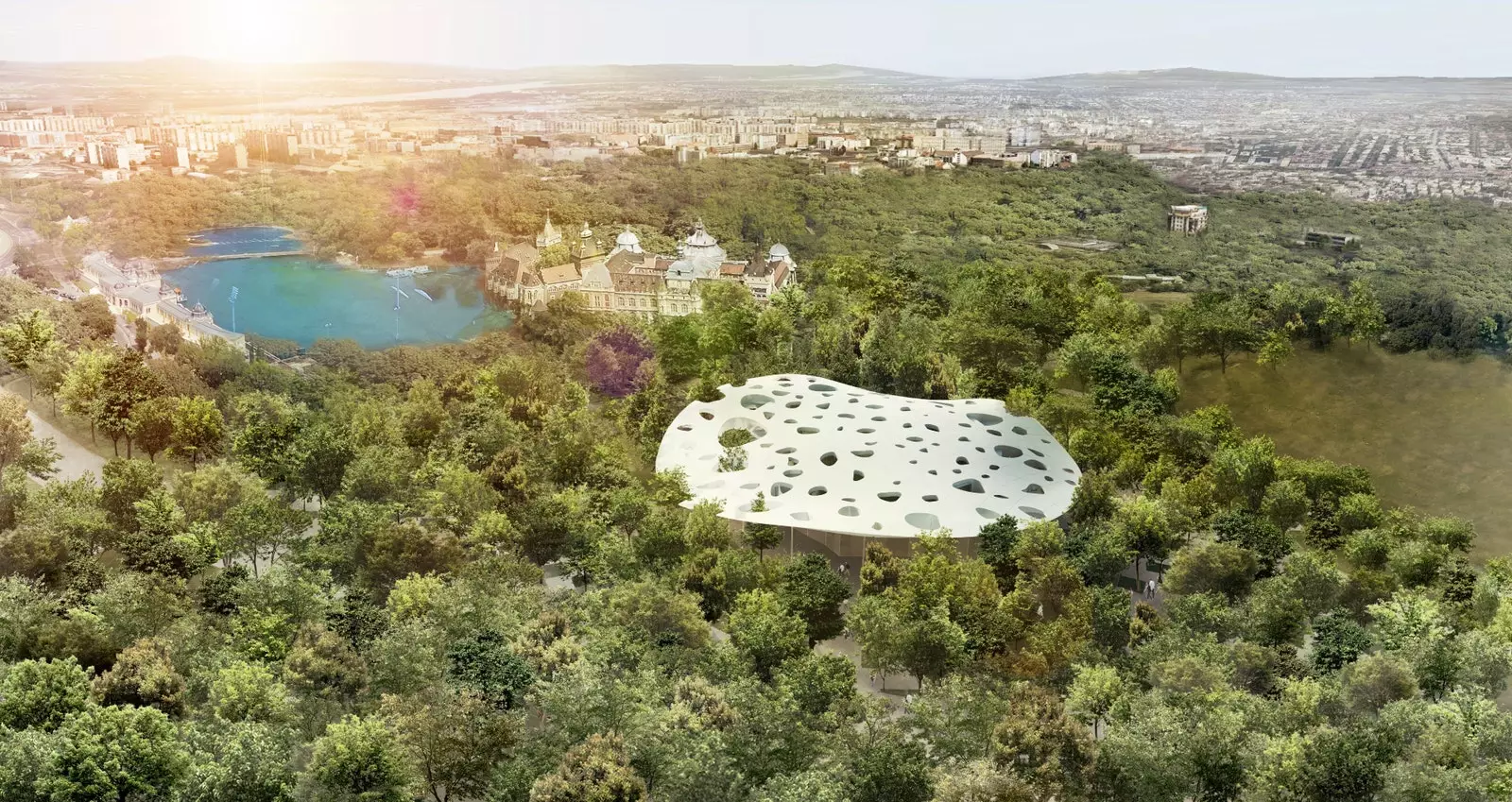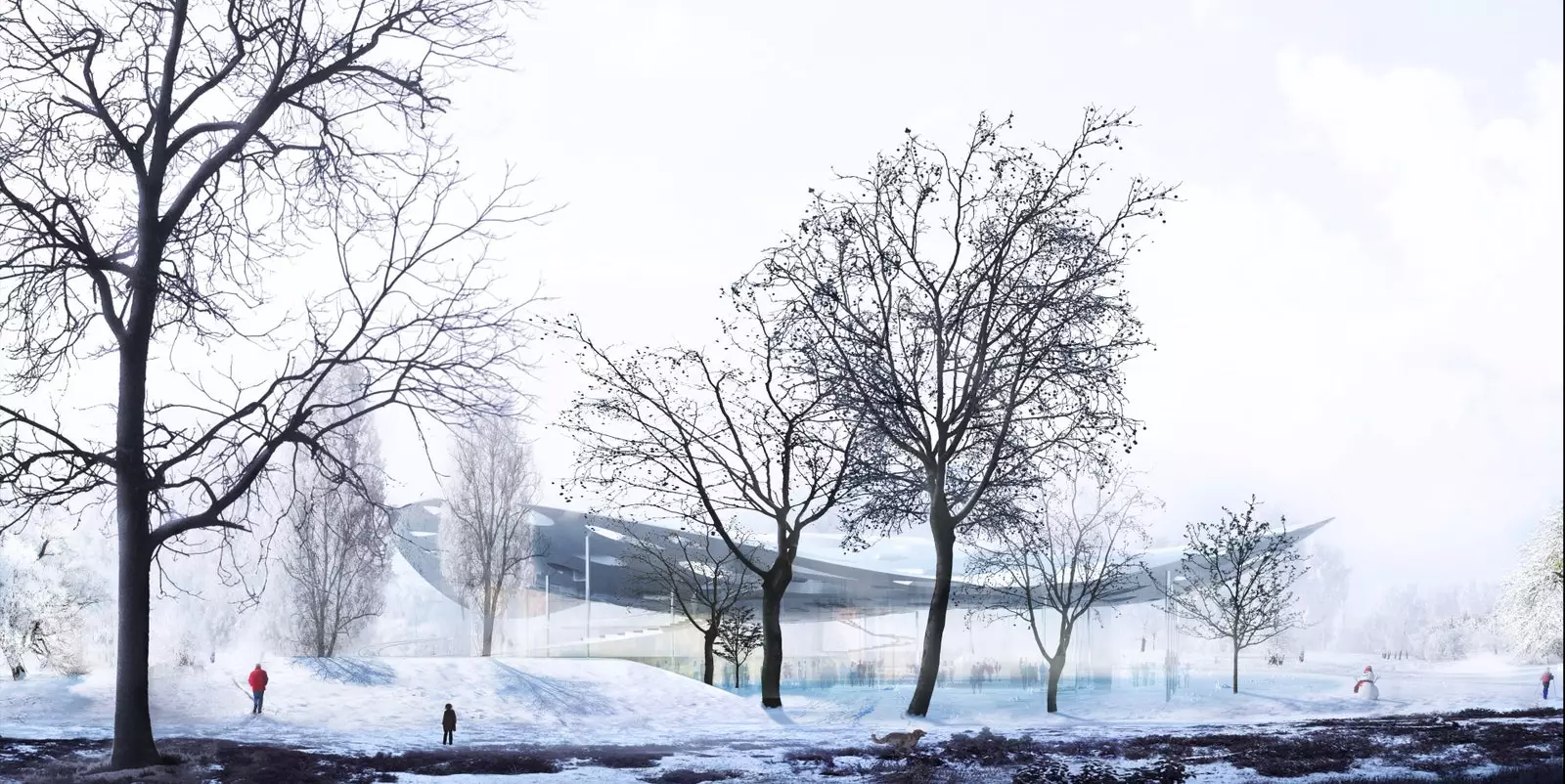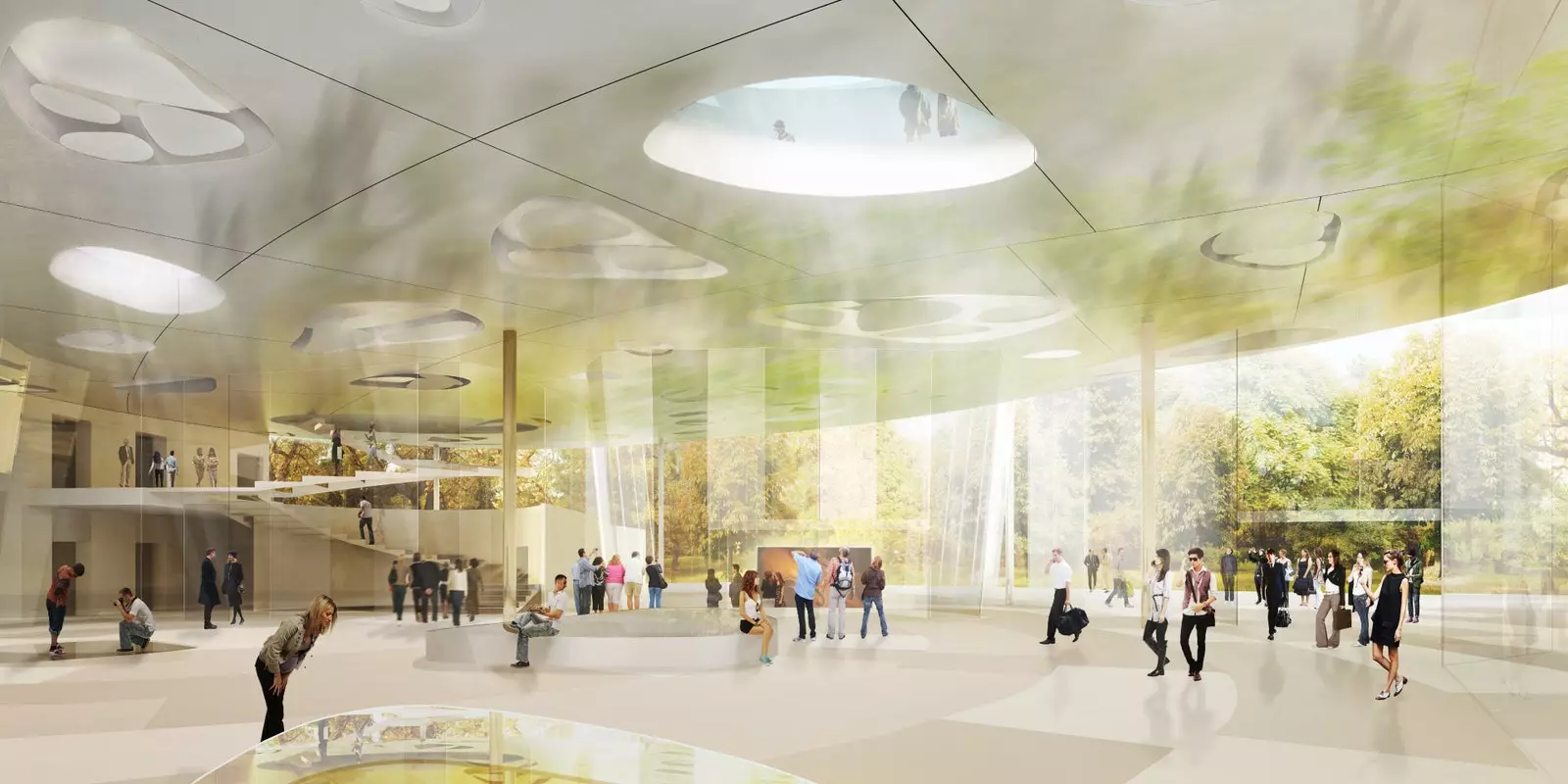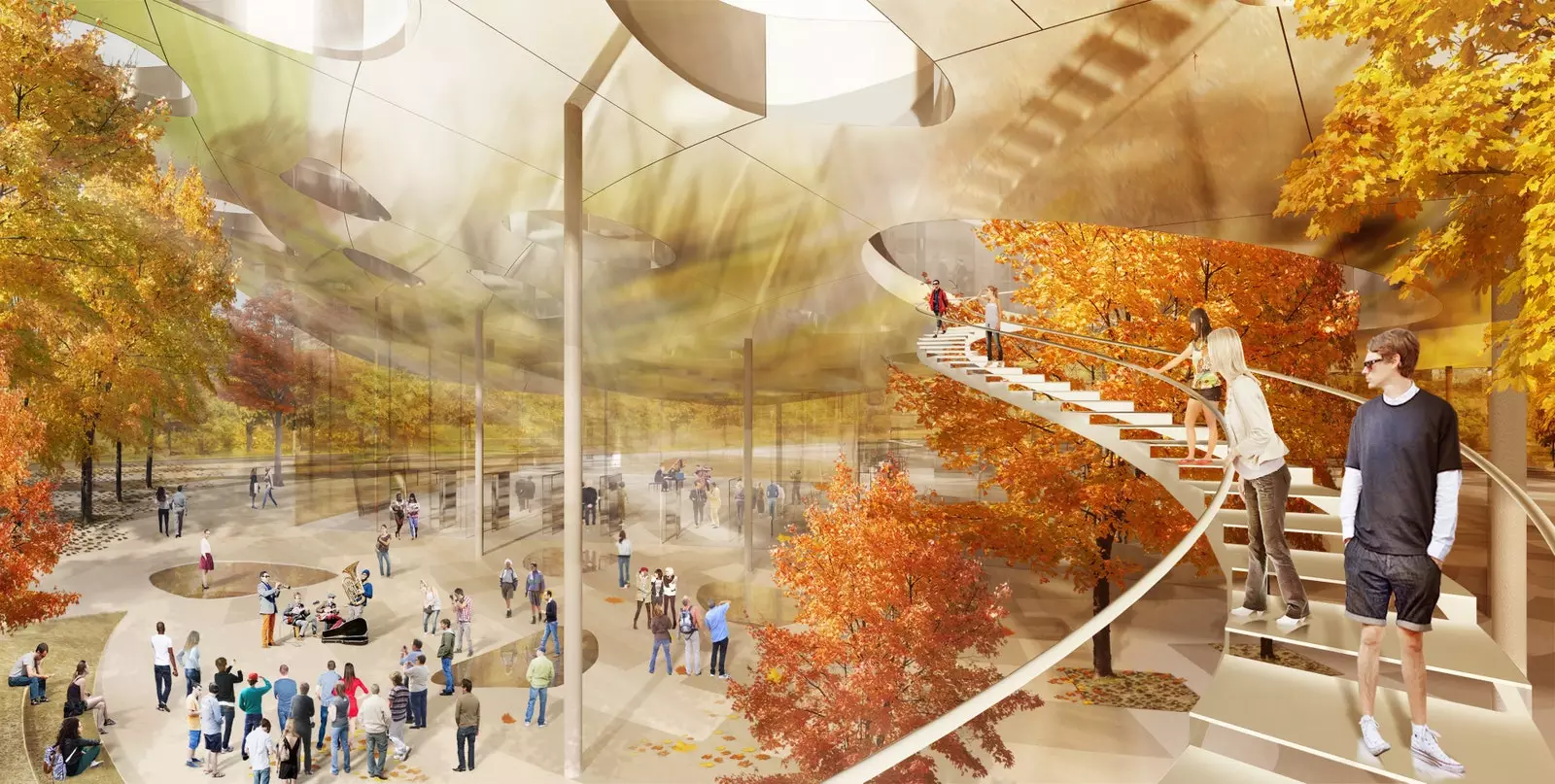
The House of Hungarian Music is carefully integrated into the forest.
"The essence of sound and music, hearing, can be translated in much deeper ways," he explains. the Sou Fujimoto architecture studio, in charge of giving (in addition to sound) the shape of the new House of Hungarian Music, located in the heart of the Budapest City Park, by the lake in Városliget. Because this project, which is about to open in the place previously occupied by the demolished offices of the old Hungexpo, It has not been conceived by the Japanese architect solely as a museum, but as a space with “a broader vision, encompassing the past and the future, people and culture, nature and the sciences of music”.
Inspired by the treetops and the dense foliage of a forest, which covers and protects while allowing the sun's rays to reach the ground, Sou Fujimoto's House of Music is not about showing off, but about integrating and carefully adjusting to the landscape and soul of the park, as specified by the equipment. In this way, visitors will be able to 'invade' it freely, as they would in nature, while listening to the sounds that bounce off the surfaces and run through the walls: “We chose to let the architecture cradle visitors in their path”, clarifies the study, with offices in Tokyo and Paris.

The project has been inspired by the protection provided by the treetops.
ECOLOGY AND AESTHETICS
The building –as aesthetic as it is ecological– has been designed as a meeting place where people can go to study, play, work or listen to music, one of the reasons why won the award for Best Worldwide Use of Music in Real Estate Development at the Music Cities Awards, whose objective is to recognize the actions related to music that contribute to greater economic, social, environmental and cultural development in cities and places around the world.
The Casa de la Música is pure architectural poetry (or perhaps we should say symphony), if we pay attention to the sensory descriptions of the Sou Fujimoto studio: “Its circular volume gently levitates, turned in all directions, freeing the ground floor to receive people from all sides, while its perforations let in natural light, like the sun's rays breaking through the leaves of a forest” . Architectural qualities that, by favoring the environment to penetrate into the heart of the building, seek to symbolize the current world without borders, both physical and electronic or communicative.

All glass, the House of Hungarian Music blurs the boundaries between inside and outside.
USES AND ACTIVITIES
The House of Hungarian Music will have a permanent exhibition in which the evolution of music from the formation of human sound to current contemporary genres will be addressed, putting special emphasis on Hungarian music and its rich history, in which musicians and composers such as Ferenc Liszt, Béla Bartók or Zoltán Kodály stand out. In fact, the scheme of the building is based on a well-known motto of the latter: "Let the music belong to everyone!"
Activities, such as concerts or events, will take place low float volume, so that everyone can both see and hear; in short, share the music.

This will be the impressive spiral staircase of the House of Hungarian Music in Budapest.
Sou Fujimoto conceived this glazed ground floor as a continuity of the landscape, where the boundaries between inside and outside are blurred, for the visitor to roam freely through the museum or among the trees or perhaps up and down the grand spiral staircase. all while it is cradled by the vibrations of spaces and the gentle variations of sunlight, before being surprised by the details that come out to meet him, “like the unexpected notes of a melody, which follow an uninterrupted movement, up, down, around, inside, outside, the same flow that gently unites museum, park, people and music, making **the visitor's experience unique”, **concludes the architecture studio.
